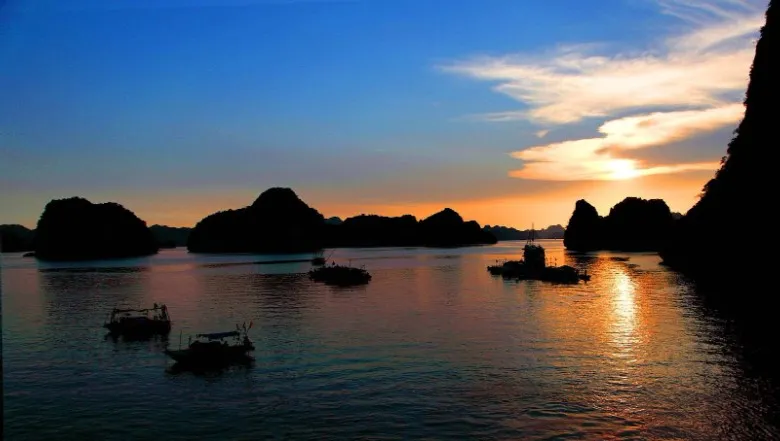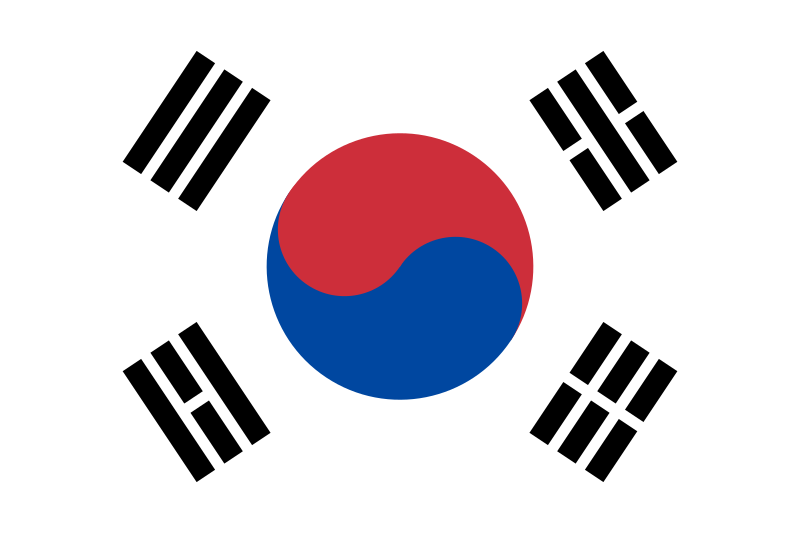Ha Long Bay Weather: The Complete Season-by-Season Guide for Travelers
When planning a trip to the breathtaking UNESCO World Heritage Site of Ha Long Bay in northern Vietnam, understanding the weather patterns is crucial for timing your visit perfectly. The bay's iconic limestone karsts, emerald waters, and floating villages offer different experiences throughout the year as the seasons change. This comprehensive guide breaks down Ha Long Bay's weather patterns by season, helps you identify the best time to visit based on your preferences, and provides practical tips for making the most of your journey regardless of when you go.
Overview of Ha Long Bay's Climate
Ha Long Bay experiences a tropical monsoon climate with four distinct seasons. Located in northeastern Vietnam, the bay's weather is characterized by high humidity, seasonal temperature variations, and a pronounced wet season. The overall climate creates an ever-changing canvas of atmospheric conditions that transform the bay's appearance throughout the year—from misty, ethereal landscapes in winter to vibrant, sun-drenched vistas in summer. This dramatic shift in scenery is part of why Ha Long Bay is famous, captivating travelers year-round with its breathtaking beauty in every season.

The bay has a tropical monsoon climate with four distinct seasons, influencing its landscapes and travel experiences - Photo Source: Facebook Vịnh Hạ Long Quảng Ninh - Thiên Đường Cảnh Vịnh
The average annual temperature in Ha Long Bay is approximately 23.7°C (74.7°F), though this varies significantly between seasons. Understanding these seasonal patterns is essential for planning activities, packing appropriately, and setting realistic expectations for your Ha Long Bay experience.
Spring: Misty Mornings and Blooming Landscapes (February-April)
Temperature and Humidity
Spring in Ha Long Bay typically runs from late January to early April, with March being considered the height of the season. During this period, temperatures gradually increase from a cooler 18°C (64°F) in February to a warmer 27°C (81°F) by April. The average temperature hovers around 20°C (68°F), creating comfortable conditions for exploration. Humidity remains relatively high, averaging between 68-75%, with early spring seeing levels up to 82% that can create morning mist over the bay.
Rainfall and Wind
Spring sees relatively low precipitation levels compared to summer, with average rainfall ranging from 30mm to 56mm per month. Light drizzle is common, especially in February and early March, but rarely disrupts travel plans. Wind speeds tend to be gentle, typically around 2 km/h, making for calm waters and pleasant sailing conditions.

Spring brings mild temperatures, morning mist, and lush scenery, making it perfect for photography and outdoor adventures - Photo Source: Facebook Vịnh Hạ Long Quảng Ninh - Thiên Đường Cảnh Vịnh
Visibility and Landscape
One of spring's defining characteristics is the atmospheric mist that often drapes over Ha Long Bay in the early mornings, creating a mystical, dreamlike quality as the limestone karsts emerge from the fog. As the day progresses, this mist typically burns off to reveal clear skies and excellent visibility. The landscape comes alive during spring as vegetation turns lush and green, flowers bloom, and birds become more active around the bay.
Activities Best Suited for Spring
Spring is ideal for:
-
Kayaking through quiet coves
-
Exploring the numerous caves and grottoes
-
Hiking on islands like Cat Ba
-
Visiting pearl farms or floating villages
-
Relaxing on beaches or boat decks
Spring is considered one of the best times to visit Ha Long Bay, especially for photography enthusiasts looking to capture both misty morning shots and clear daytime vistas. However, it's also a peak domestic tourism season, particularly around Vietnamese holidays, so advance bookings are highly recommended.
Summer: Vibrant Waters and Tropical Heat (May-September)
Temperature and Humidity
Summer stretches from May through September, bringing hot and humid conditions to Ha Long Bay. Average temperatures range from 27°C (81°F) to 32°C (90°F), but can climb as high as 38°C (100°F) on particularly hot days. Humidity levels soar between 75-78%, creating a sticky atmosphere that can feel oppressive during midday hours.
Rainfall and Wind
Summer is Ha Long Bay's wettest season, with substantial rainfall amounts:
-
May: approximately 192mm
-
June: around 175mm
-
July: about 201mm
-
August: peaking at 265mm
-
September: beginning to taper off at 190mm
Monthly averages range from 60mm to over 90mm, with sudden intense downpours being common. This is also typhoon season in northern Vietnam, with the highest risk occurring in July and August. Travelers should monitor weather forecasts closely during these months as storms can disrupt cruise schedules or lead to cancellations.

Hot and humid weather dominates, with warm waters ideal for swimming but frequent rain and occasional typhoons - Photo Source: Facebook Vịnh Hạ Long Quảng Ninh - Thiên Đường Cảnh Vịnh
Visibility and Landscape
Despite the rain, summer often features brilliant sunshine between showers, with the bay's waters turning a vibrant emerald green under clear skies. The high sun position creates dramatic contrasts between the dark karst formations and the bright sky and water. After rainfall, visibility can be exceptional as the air is cleared of pollution and dust.
Activities Best Suited for Summer
Summer is perfect for:
-
Swimming and water activities
-
Beach relaxation (particularly in May and June)
-
Visiting cool caves to escape the heat
-
Enjoying stunning sunsets (when skies are clear)
-
Night squid fishing excursions
While the heat and humidity can be challenging, summer offers the warmest water temperatures for swimming. Smart travelers plan outdoor activities for early morning or late afternoon, avoiding the intense midday sun. Always keep rain gear handy for sudden downpours.
Autumn: Golden Light and Comfortable Temperatures (September-November)
Temperature and Humidity
Autumn in Ha Long Bay runs from September through November, though some consider true autumn to begin in October. This season brings relief from summer's intense heat, with temperatures gradually cooling to a comfortable range of 22°C (72°F) to 25°C (77°F). Daily fluctuations can see temperatures as low as 19°C (66°F) in the morning and evening, and up to 33°C (91°F) during peak daylight hours. Humidity levels decrease noticeably to around 70-72%, creating a much more comfortable atmosphere.
Rainfall and Wind
Precipitation decreases significantly as autumn progresses:
-
September: still relatively wet with around 190mm
-
October: dramatic reduction to approximately 54mm
-
November: drier still at about 12mm
Wind conditions tend to stabilize during autumn, creating calm waters and excellent sailing conditions. By late October and November, the risk of typhoons diminishes considerably.

Cooler, drier conditions with stunning golden-hour lighting make autumn the best season for scenic cruises and photography - Photo Source: Vịnh Hạ Long Quảng Ninh - Thiên Đường Cảnh Vịnh
Visibility and Landscape
Autumn is widely regarded as offering the most photogenic conditions in Ha Long Bay. The air clarity improves dramatically, and the lower-angle sunlight bathes the limestone formations in a warm, golden glow, particularly during sunrise and sunset. The sky tends to be brilliantly blue with distinctive cloud formations that add dramatic elements to photographs.
Activities Best Suited for Autumn
Autumn is ideal for:
-
Photography expeditions
-
Extended cruises in the bay
-
Kayaking in calm, clear waters
-
Island hiking with comfortable temperatures
-
Exploring more remote areas of the bay
Many travelers and locals consider autumn (especially October and November) to be the absolute best time to visit Ha Long Bay. The comfortable temperatures, low rainfall, excellent visibility, and smaller crowds create perfect conditions for experiencing everything the bay has to offer.
Winter: Ethereal Mists and Tranquil Bay (December-January)
Temperature and Humidity
Winter arrives in Ha Long Bay from December and extends through January (some sources include February as winter, while others classify it as early spring). This season brings the coolest temperatures of the year, with averages ranging from 13°C (55°F) to 20°C (68°F). Nighttime temperatures can drop as low as 10°C (50°F), and rarely even approach 5°C (41°F) during cold snaps. Humidity levels decrease compared to other seasons, typically falling below 60%, with early winter seeing levels between 65-69%.
Rainfall and Wind
Winter is Ha Long Bay's driest season, with minimal rainfall ranging from 10mm to 15mm on average, though some sources indicate precipitation may increase slightly in January and February. Northeastern monsoon winds can pick up during winter, occasionally creating choppy waters, but generally conditions remain navigable.

Cold but dry weather creates mysterious foggy landscapes, offering a peaceful and unique Ha Long Bay experience - Photo Source: Vịnh Hạ Long Quảng Ninh - Thiên Đường Cảnh Vịnh
Visibility and Landscape
Winter brings a distinctive atmosphere to Ha Long Bay characterized by thick fog that often envelops the limestone karsts, creating a mysterious, ethereal landscape. The reduced sunlight hours and misty conditions transform the bay into a monochromatic scene reminiscent of traditional Vietnamese ink paintings. While this may limit visibility at times, it creates unique photographic opportunities and a completely different experience of the bay's beauty.
Activities Best Suited for Winter
Winter is perfect for:
-
Enjoying a less crowded experience of the bay
-
Photography capturing fog-shrouded karsts
-
Exploring caves with pleasant cool temperatures
-
Experiencing local winter cuisine and warming dishes
-
Cultural immersion in fishing villages
Winter cruises tend to be less crowded and often more affordable, making this a good option for budget-conscious travelers who don't mind cooler temperatures. The ethereal atmosphere creates a romantic setting that couples may particularly appreciate.
Best Time to Visit Ha Long Bay
Based on the detailed analysis of weather patterns, the optimal times to visit Ha Long Bay are:
Spring (March-April) and Autumn (September-October)
These transition seasons offer the most pleasant and consistent weather conditions, with comfortable temperatures ranging from 18°C (64°F) to 28°C (82°F), moderate humidity, and minimal rainfall. The clear skies and good visibility make these periods ideal for outdoor activities, exploration, and photography.

Spring (March-April) and autumn (September-October) are the best seasons due to pleasant temperatures and clear skies - Photo Source: Vịnh Hạ Long Quảng Ninh - Thiên Đường Cảnh Vịnh
For Specific Interests:
-
Water activities: Summer (June-August) offers the warmest water temperatures, though travelers should monitor weather forecasts for storms.
-
Photography: Late autumn (October-November) provides the clearest air and most dramatic lighting, while winter mornings offer unique misty landscapes.
-
Quieter experience: Winter (December-February) sees fewer tourists, particularly after Vietnamese New Year celebrations.
-
Budget travel: Shoulder seasons (April-May and September-October) often feature better deals on cruises and accommodations than peak periods.
It's worth noting that spring is a peak season for domestic tourism in Ha Long Bay, which can lead to higher prices and more crowded conditions. Booking services weeks or even months in advance is recommended, and travelers should avoid major Vietnamese holidays if possible.
Practical Weather Tips for Ha Long Bay Travelers
What to Pack Based on Season
Spring (February-April):
-
Light layers that can be added or removed
-
Rain jacket or small umbrella for occasional drizzle
-
Comfortable walking shoes for exploration
-
Sunscreen and hat for increasingly sunny days
-
Light sweater for evenings, especially in early spring
Summer (May-September):
-
Lightweight, breathable clothing
-
High-SPF sunscreen, hat, and sunglasses
-
Rain jacket or poncho for sudden downpours
-
Swimwear for water activities
-
Mosquito repellent
-
Electrolyte packets to maintain hydration
Autumn (September-November):
-
Light layers for fluctuating temperatures
-
Light jacket for evenings
-
Comfortable walking shoes
-
Camera equipment for exceptional photography conditions
-
Sunglasses and hat
Winter (December-January):
-
Warm layers including light jackets and sweaters
-
Scarf and warm hat for boat trips (wind can make temperatures feel colder)
-
Comfortable closed shoes
-
Camera gear for misty, atmospheric shots
Weather-Related Travel Considerations
-
Flexible scheduling: During summer months (particularly July-August), build flexibility into your itinerary to accommodate potential weather disruptions.
-
Cruise cancellation policies: When booking cruises during stormy season, check cancellation policies and options for rescheduling.
-
Extended stays: Consider booking an extra day in the area during rainy season to allow for schedule adjustments if needed.
-
Early bookings: For visits during ideal weather windows (March-April and October-November), book accommodations and cruises well in advance as these are popular periods.
-
Weather monitoring: Use reliable weather apps to track conditions before and during your visit, particularly in summer when storms can develop quickly.
-
Seasonal pricing: Be aware that prices often fluctuate with seasonal demand, with peak prices during Vietnamese holidays and lowest rates during winter (except for New Year).
-
Motion sickness preparation: If prone to seasickness, bring medication, especially during winter when waters can be choppier due to northeastern monsoon winds.
-
Photography planning: Research sunrise/sunset times for your specific travel dates to maximize the golden hour lighting that makes Ha Long Bay especially photogenic.
Alternative Activities for Adverse Weather Days
Even with careful planning, you might encounter less-than-ideal weather during your Ha Long Bay visit. Here are some alternatives for those days:
-
Cave exploration: Many of Ha Long Bay's caves maintain consistent internal temperatures and provide shelter from rain or excessive heat.
-
Cultural visits: Explore nearby museums like the Quang Ninh Museum to learn about the region's history and culture.
-
Culinary experiences: Use rainy days to sample local specialties at restaurants in Ha Long City.
-
Spa and wellness: Many cruises and hotels offer spa services that are perfect for inclement weather days.
-
Indoor activities: Some larger cruise ships offer cooking classes, cultural performances, or tai chi sessions that can be enjoyed regardless of weather.
-
Shopping escapes: If you're wondering where to shop in Ha Long Bay during a rainy spell, head to Vincom Plaza or Ha Long Market for everything from local crafts to souvenirs - perfect spots to explore while staying dry.
-
Photography focus: Rainy or foggy conditions create unique photographic opportunities—embrace the different atmosphere rather than being disappointed by it.

Explore caves, enjoy local cuisine, visit museums, or relax with onboard activities when weather conditions are unfavorable - Photo Source: Vịnh Hạ Long Quảng Ninh - Thiên Đường Cảnh Vịnh
Conclusion: Embracing Ha Long Bay in Every Season
While spring and autumn offer the most reliably pleasant weather conditions for exploring Ha Long Bay, each season provides a unique perspective on this natural wonder. Summer's vibrant colors and swimming opportunities, winter's ethereal mists and tranquility, spring's fresh atmosphere and autumn's golden light all showcase different facets of the bay's beauty.
Remember that Ha Long Bay's limestone karsts have stood for millions of years through countless seasons—their enduring beauty transcends temporary weather conditions, revealing different aspects of their majesty throughout the year. Whether shrouded in mysterious fog or gleaming under brilliant sunshine, the bay's timeless landscape never fails to inspire awe in those fortunate enough to experience it.
With a well-planned itinerary, budget-friendly options, and an open mind to meeting new people, your solo journey will be both fulfilling and exciting. Let Joytime be your trusted companion, providing essential travel gear to ensure comfort, safety, and convenience throughout your trip. An incredible solo adventure awaits—pack your bags and explore Hanoi with confidence!
|
Joytime Travel Agency - Travel JOY, TIMEless Vietnam Follow us for travel tips, local insights, and exclusive offers:
|

Danish Nguyen
Danish Nguyen is a renowned travel blogger in Vietnam with over 5 years of experience sharing unique travel experiences. With a passion for exploring new places, Danish captures incredible moments and provides readers with valuable tips to discover the beauty of his homeland.








.webp)
.webp)








